Fabrics in Hanfu: Fibers and Weaving Techniques

Hanfu materials and Hanfu weaving techniques
Fibers
In the world of fabric, fibers are the materials that are spun into threads and then woven into textiles. These fibers can be either synthetic, made in factories or labs, or natural, like animal fibers from fur or silk, or plant fibers harvested from various fibrous plants. Understanding these fibers is crucial when considering fabrics in Hanfu.
Tencel (Lyocell)
Tencel, also known as Lyocell, is a semi-synthetic fiber made from cellulose. It gained popularity last summer and was initially used as a silk alternative. Tencel is created by dissolving cellulose into a pulp and then using a dry jet spinning technique to reassemble the fibers. This process is eco-friendly, turning natural materials into a synthetic fabric. Tencel is softer than linen, more breathable than polyester, and absorbs moisture better than cotton. One downside is that it wrinkles easily, but its smooth drape and breathability make it a favorite among modern Hanfu makers, especially for Hanfu fabrics where comfort and style are key. The weaving techniques used with Tencel can enhance the fluidity and elegance typical in Hanfu materials.
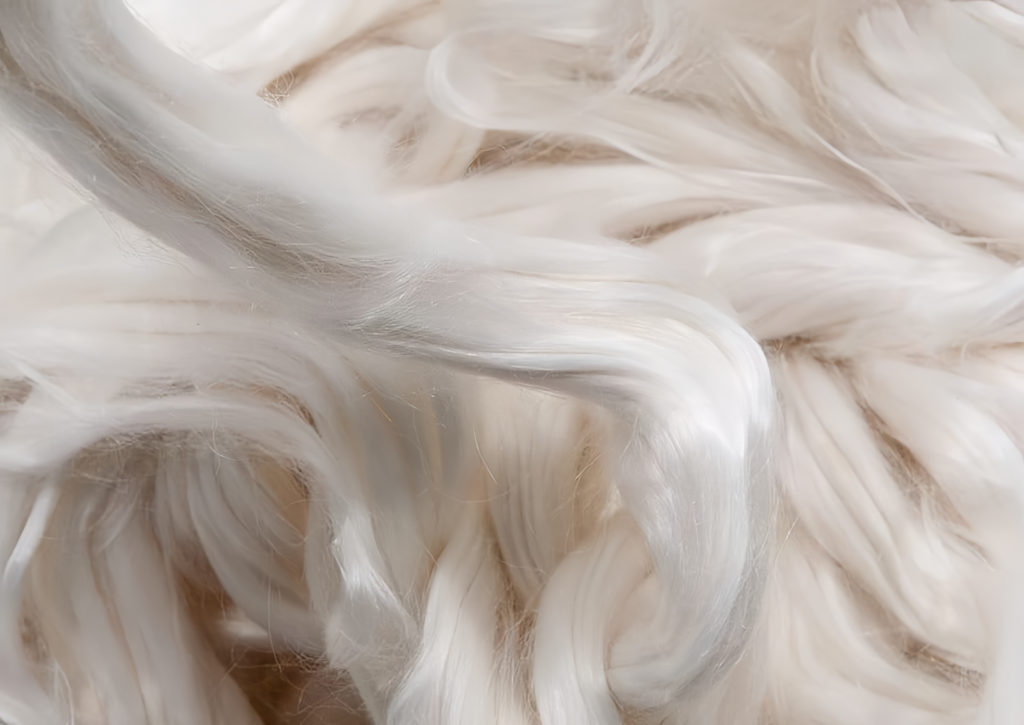
Tencel fabric is perfect for lightweight tops or garments worn in warm weather like those seen in Ming and Song Dynasty styles. It’s often used in close-fitting clothes due to its comfort, or as a thin layer that won’t overheat even when layered. You can machine wash or tumble dry it, but after washing, make sure to iron or air-dry it carefully to avoid wrinkles. If you’re looking for Hanfu made with this material, search for “Tencel cotton” (天丝棉).
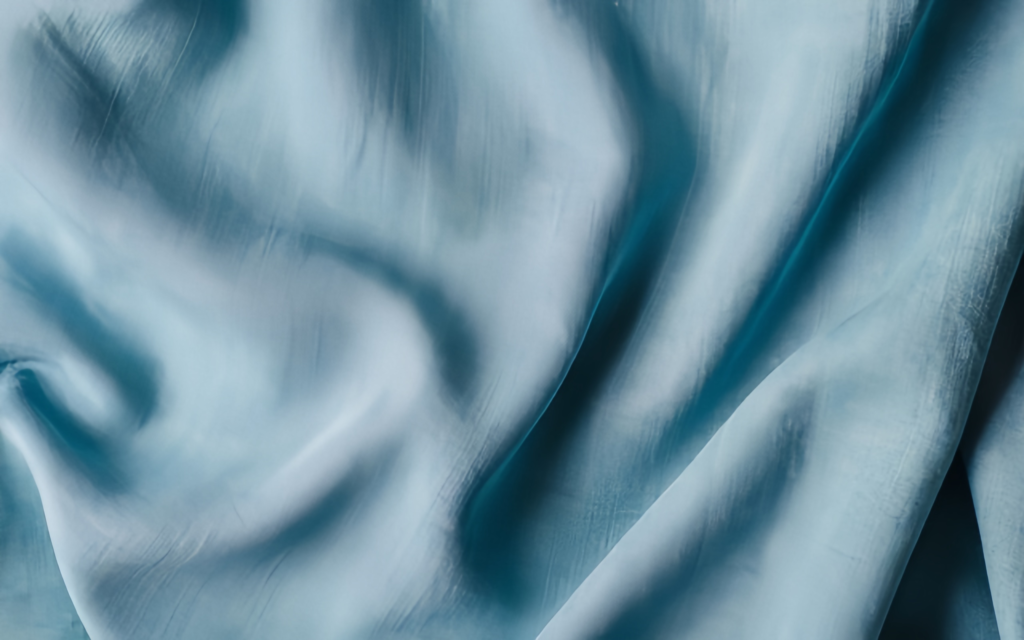
Cotton
Cotton, or cotton blends, is one of the most common fibers used in the garment industry, including for Hanfu materials. It’s low-allergenic, versatile, and easy to process. Historically, cotton wasn’t widely used until the Song Dynasty, with hemp being the more common choice. Cotton was mainly produced by minority groups in remote areas and wasn’t the primary fiber at the time. However, by the Ming Dynasty, cotton became a more popular textile for fabrics in Hanfu. Cotton is softer on the skin compared to hemp and has excellent moisture-wicking properties, which made it increasingly favored, especially for everyday wear.
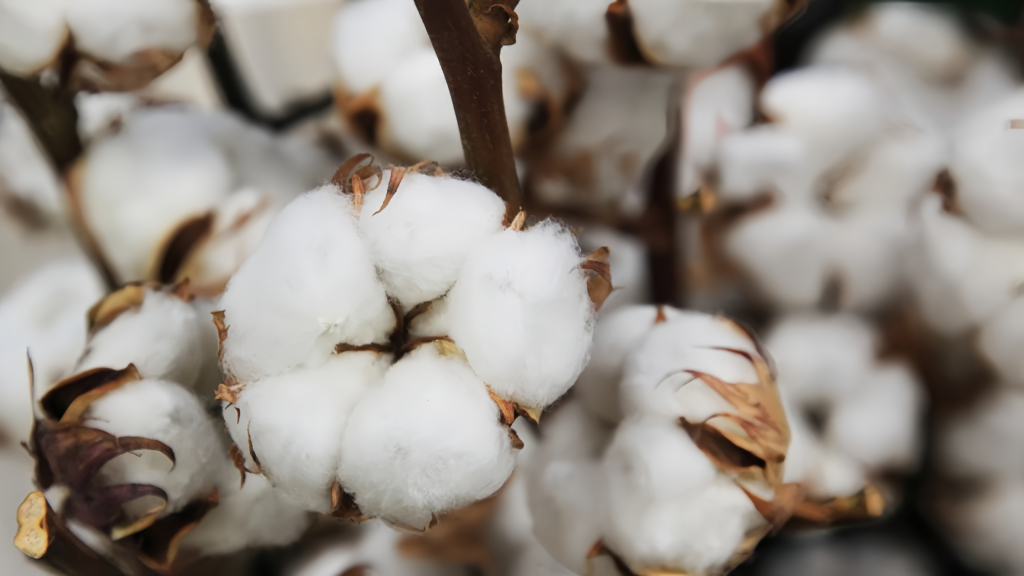
Today, cotton is seen everywhere in modern clothing, from shirts to pants to Ming-era silk-satin jackets. However, cotton fabrics, especially pleated skirts like the Ma Mian skirt, are less common in Hanfu materials because the pleats can be easily ruined by washing and need constant ironing. Cotton fabrics can be machine washed and tumble dried, but be aware that they shrink easily, especially the first time you wash them. If you’re worried about wrinkles, it’s best to hang dry, lay flat, or iron them.

Linen
Linen, derived from the flax plant, is similar to cotton but less commonly used in China. While it’s not as popular as cotton, linen has been used in ancient garments and is known for its breathability and stiffness. As one of the traditional fabrics in Hanfu, linen was valued for its ability to keep the wearer cool in warm weather. However, it wrinkles easily, just like cotton, which can be a drawback for Hanfu materials that require smooth, flowing fabrics.
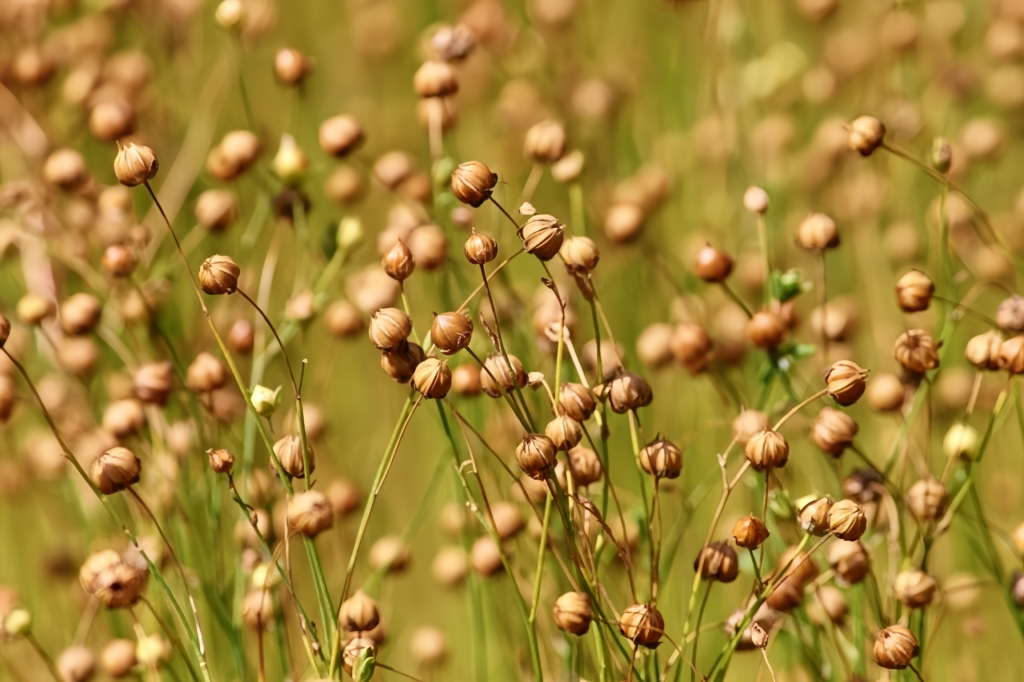
Linen is closely related to hemp, which historically was favored by ancient peoples for clothing. Hemp, or flax-hemp, was one of the most widely used fabrics in Hanfu due to its affordability compared to silk. Hemp is breathable, durable, and holds its shape well, making it perfect for outer garments or fabrics in earthy tones. It’s especially suited for cooler and warmer seasons, which makes it ideal for Hanfu garments worn during those times.
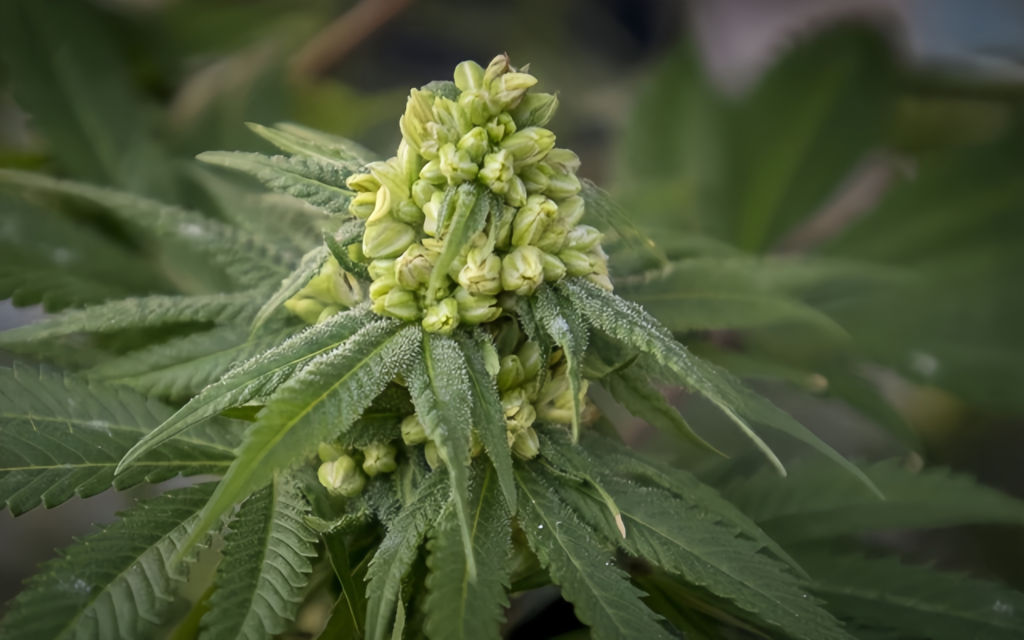
Hemp is commonly used in shirts, but it’s less often used in skirts unless lined. Like other natural fibers, pleated hemp skirts require careful washing to maintain the pleats, and it’s best to air dry them rather than machine dry. Hemp is a popular material in Hanfu, especially for those seeking durable, breathable fabrics with an earthy aesthetic. Its use in traditional clothing dates back centuries and remains relevant in modern Hanfu materials for both outer and casual wear.

Polyester
Polyester is probably the most common synthetic fiber in modern Hanfu materials. It’s cheap to produce and extremely versatile. Many Hanfu items, especially chiffon and printed fabrics, are made from polyester because it’s easy to print on, low-maintenance, and resistant to wrinkles. One downside is that polyester is not the most breathable fiber and doesn’t absorb moisture well, but this doesn’t stop it from being a popular choice for Hanfu production.

Most pleated skirts in Hanfu are made from polyester because it holds pleats well during washing and drying. If your skirt has delicate features like embroidery, it’s a good idea to place it in a laundry bag to protect it.

Wool
Wool, associated with sheep, is a protein fiber that comes from the fur of various animals. Known for its warmth, wool is a must-have for winter clothing. Its thick fabric makes it perfect for cold-weather garments, helping to block wind and provide insulation.

Wool fabrics were common in the outer layers of garments during the Tang, Song, and Ming Dynasties and are often lined with cotton or polyester to avoid direct contact with skin. Modern Hanfu materials, especially those focusing on autumn and winter styles, frequently use wool in their collections. Although wool doesn’t have the flowy, airy feel of other fabrics, it gives off an elegant, dignified look while keeping you warm. However, wool is more difficult to care for, and you’ll often need to send it to a dry cleaner. If you’re not into dry cleaning, synthetic wool fibers are also a decent alternative.
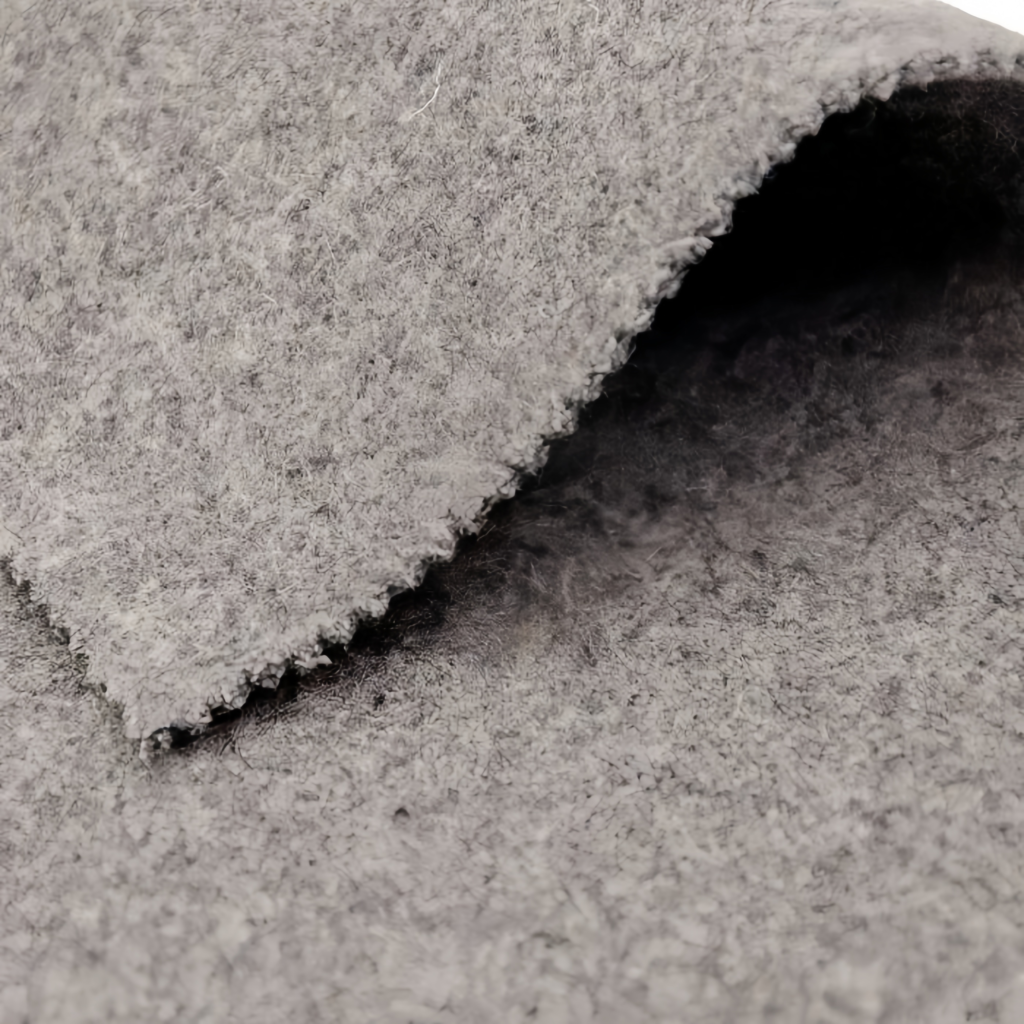
Silk
How could we forget about silk? Silk, a special and luxurious fabric, has been around for thousands of years. It’s made from the threads of silkworms, which were cultivated in ancient China. As one of the most coveted fabrics in Hanfu, silk is breathable, smooth, and light, offering warmth when it’s cold and coolness when it’s hot. It’s considered the epitome of luxury and has been a vital part of Chinese culture for nearly 9,000 years.
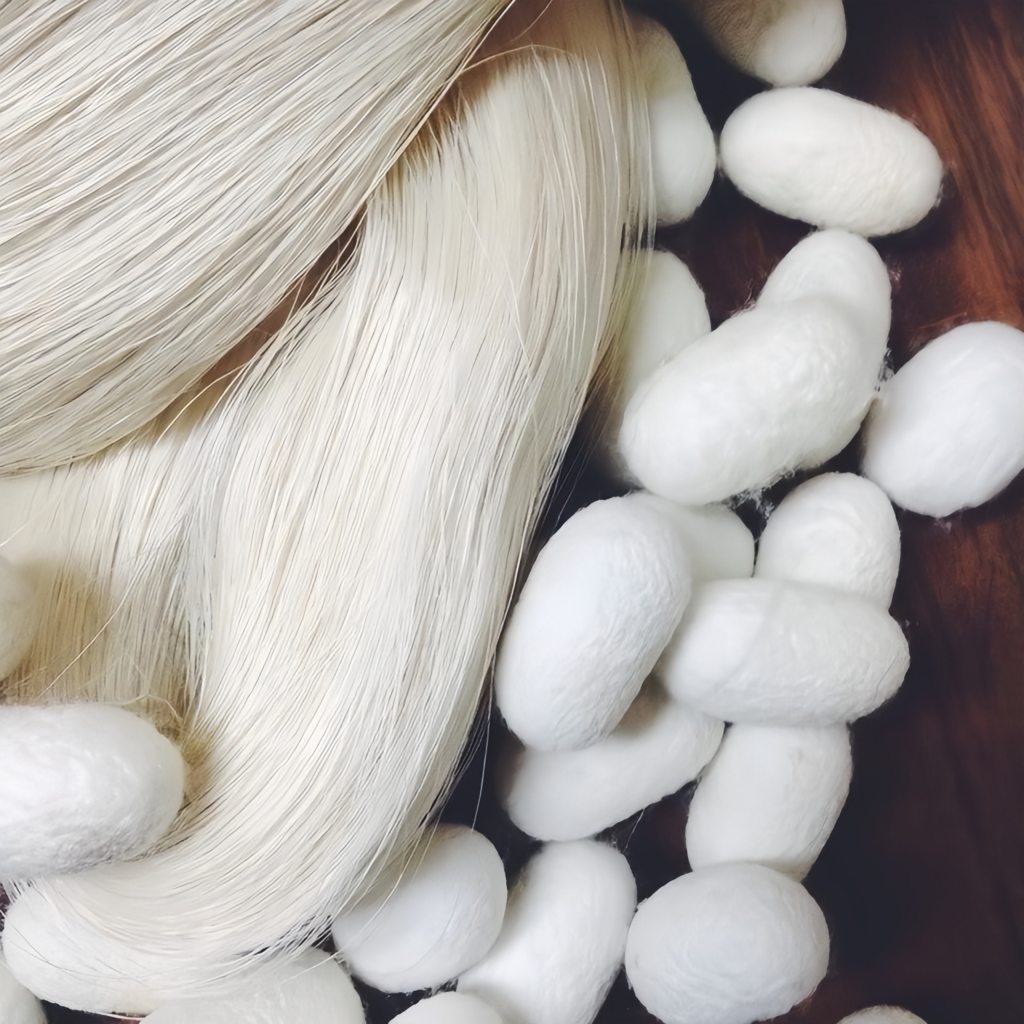
Initially, silk was reserved only for royalty, but over time, it spread and became a symbol of wealth and luxury. Many historical artifacts are made of silk, and it remains a crucial part of Hanfu materials to this day. Due to its high price, most people can’t afford pure silk Hanfu, opting instead for artificial silk or other alternatives. One downside of silk is that it’s difficult to maintain – it’s delicate and can be damaged by water, so if you own a silk garment, it’s best to hand wash it or take it to the dry cleaners.
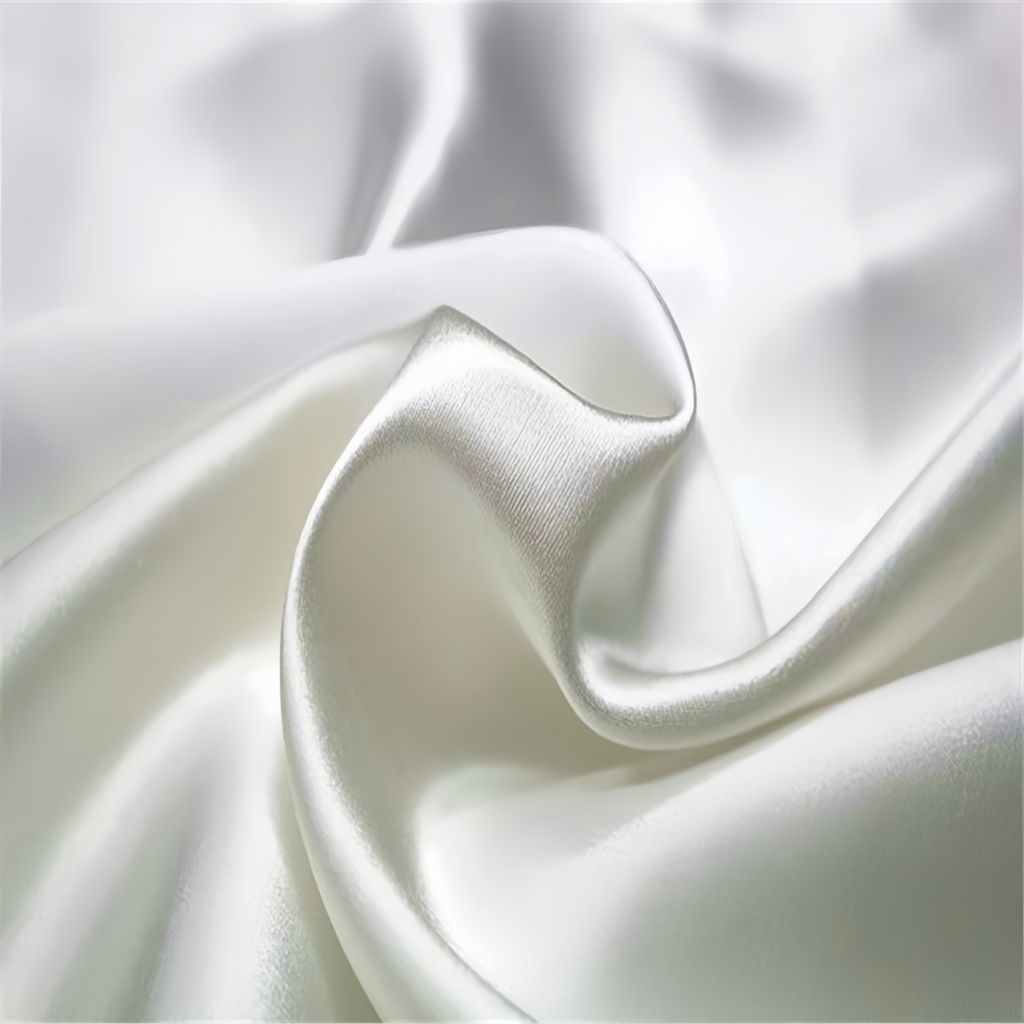
Weaving Techniques
Now that we’ve talked about the fibers, how are they woven into the fabrics we use today? That’s where Hanfu weaving techniques come in. Weaving involves intertwining two sets of threads, called the warp (vertical) and the weft (horizontal). These threads cross over and under each other to create the fabric. There are different types of weaving, some of which are easy to understand, and others are a bit trickier to translate between languages. The key is that the fabric is typically made by interlacing these threads to form a surface we can use as a textile. So, let’s take a look at some of the most common weaving techniques used in Hanfu fabrics.
Plain Weave
Plain weave is one of the simplest Hanfu weaving techniques, where one weft thread crosses over one warp thread, creating a simple crisscross pattern that looks a bit like a checkerboard. Fabrics in Hanfu like cotton, silk, and synthetics are often woven in plain weave. Plain silk, known as “juan” in Chinese, has been used in historical Hanfu fabrics like skirts, tops, and robes. The surface of this fabric is usually matte and lacks any directional sheen.

Gauze
Gauze, another variation of plain weave, has two weft threads that wrap around each warp thread in a crisscross pattern, creating small diamond-shaped holes. This structure is known as a “gauze weave,” and it gives the fabric both breathability and transparency. The threads are interwoven tightly enough to hold the fabric together, but it’s still lightweight and slightly see-through. Silk gauze, or “luo,” is especially delicate and airy, and often used for making translucent garments that look beautiful when layered.

Chiffon
Chiffon is one of the most common weaving techniques used for Hanfu (especially for flowy, ethereal styles). It’s a semi-transparent fabric made with alternating S and Z twist yarns. This means the yarn is tightly twisted in opposite directions, and when woven in plain weave, it creates a slightly uneven surface with light transparency. Chiffon fabric has excellent drape, making it perfect for creating the soft, flowing look typical of Hanfu. Nowadays, most chiffon is made from nylon or polyester, but the traditional silk version uses the same twisting technique, called “xiao.”
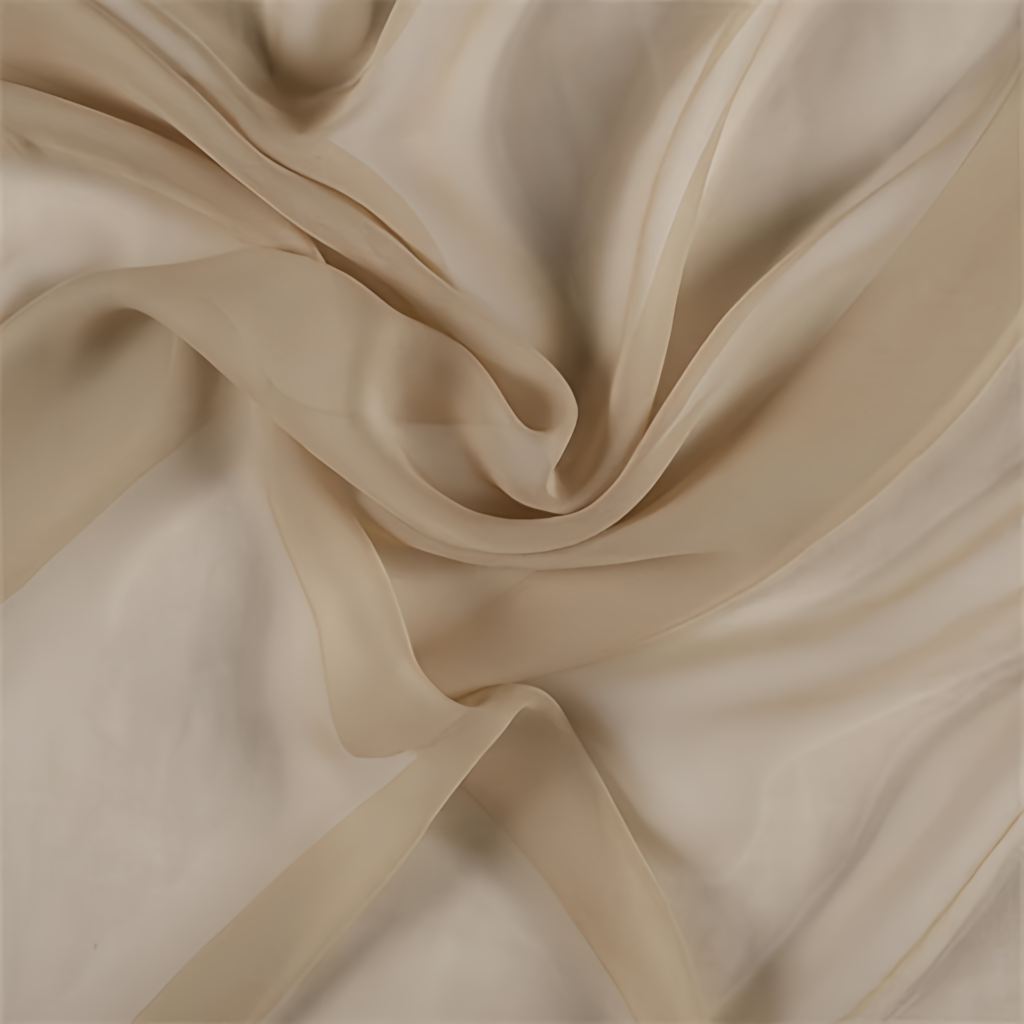
Crepe
Crepe fabrics, which include types like double crepe, georgette, and crepe satin, are lightweight and often made from silk or polyester. These fabrics have a unique crinkled appearance, which gives them a slightly rough texture. Crepe fabrics are known for their beautiful drape and distinctive texture. The crinkling is natural, which means it’s easier to hide wrinkles when wearing or storing the fabric. Many Hanfu dresses and outer layers are made from crepe chiffon due to its beautiful flow and texture.

Satin
Satin is another traditional fabric that traces its origins back to China, where it was developed around the 12th century before spreading to Europe. Known for its glossy, shiny surface, satin is created through a Hanfu weaving technique where multiple warp threads float over a single weft thread, which reflects light in a smooth, reflective manner.
Chinese satin is typically woven with five or six warp threads, and the more advanced techniques, such as those used during the Northern Song dynasty, made it highly prized for its luxurious look. Today, you’ll see satin used in various forms, including Shandong satin, soft satin, and polyester satin. The classic shine and smooth feel of satin make it perfect for garments where elegance and opulence are key.
Satin originated in China and didn’t reach Europe until the 12th century. The shiny surface of satin comes from its weave pattern, where four or more weft threads float over one warp thread, and vice versa. This creates a reflective surface that shines brightly. Most Chinese satin fabrics are made with five or six warp threads, and this weaving method was refined during the Northern Song Dynasty. Today, you’ll find various forms of satin like Shandong satin and soft satin, often used in elegant, formal Hanfu styles.
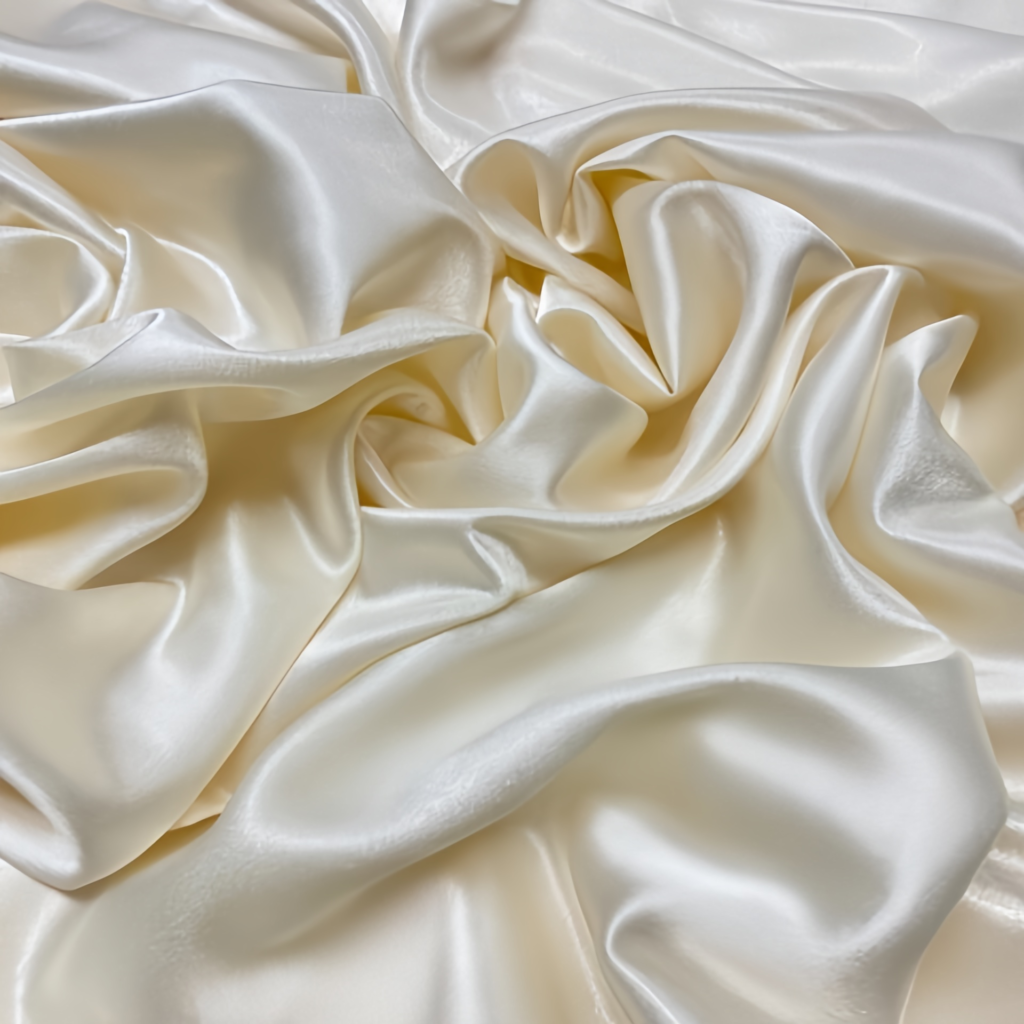
Jacquard (Brocade, Ling)
Jacquard fabrics, especially brocade and ling, were commonly used in Ming Dynasty garments. The Jacquard loom, invented by French engineer Joseph Marie Jacquard, was the first “computer” that allowed for intricate patterns to be woven into fabric. Jacquard weaving allows for multi-colored designs and patterns to be created using different threads. Brocade, often using shimmering threads like metallic gold, silver, or holographic fibers, is a luxurious and intricate fabric used in Hanfu.
Jacquard satin is one of the most commonly used fabrics in Ming dynasty clothing, sometimes also seen in decorative elements of Song dynasty attire. Named after Joseph Marie Jacquard, the French inventor who developed the Jacquard loom, which is considered the first “computer,” this fabric enables the weaving of intricate patterns, brocades, and damask designs. Jacquard weaving allows the creation of complex, multicolor patterns, often woven with pearl-like, golden, or holographic threads for added sheen.
The technique of Jacquard weaving gives fabric its signature detailed, textured surface, and these designs can often depict floral, geometric, or symbolic imagery, making it one of the most luxurious options in traditional Hanfu. It’s frequently used for formal and ceremonial garments, where the beauty of the fabric plays a role in conveying social status.

Care Tips for Hanfu Fabrics
To ensure your Hanfu fabrics remain in top condition, it’s important to care for the Hanfu materials properly. For delicate fabrics like silk, hand washing or dry cleaning is recommended. Fabrics like Tencel and polyester are easier to care for and can be machine washed, but ironing or air drying is necessary to prevent wrinkles.
For more information on traditional Hanfu fabrics, click here.
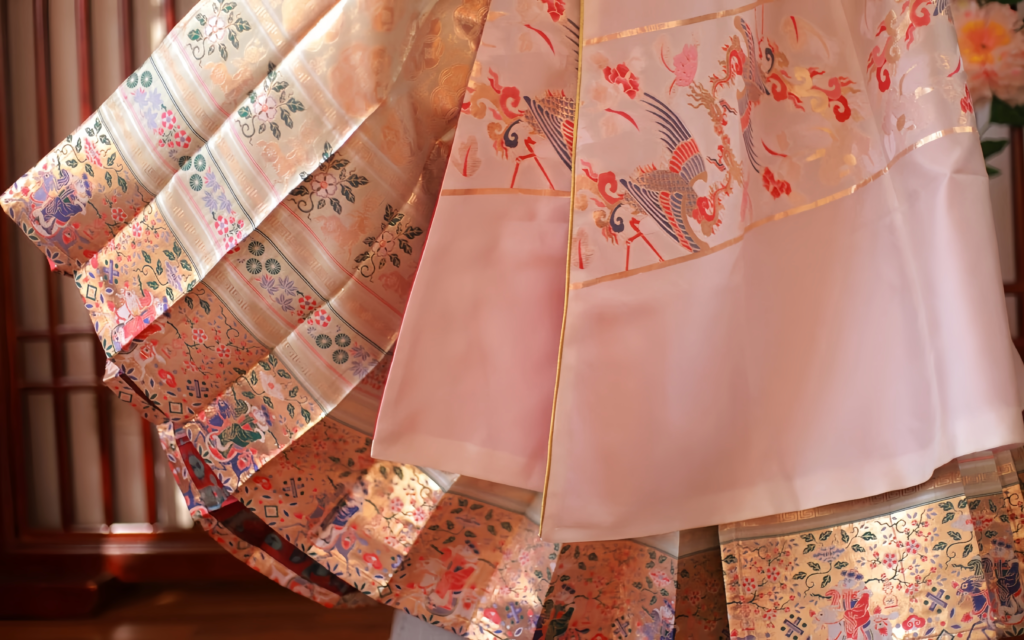
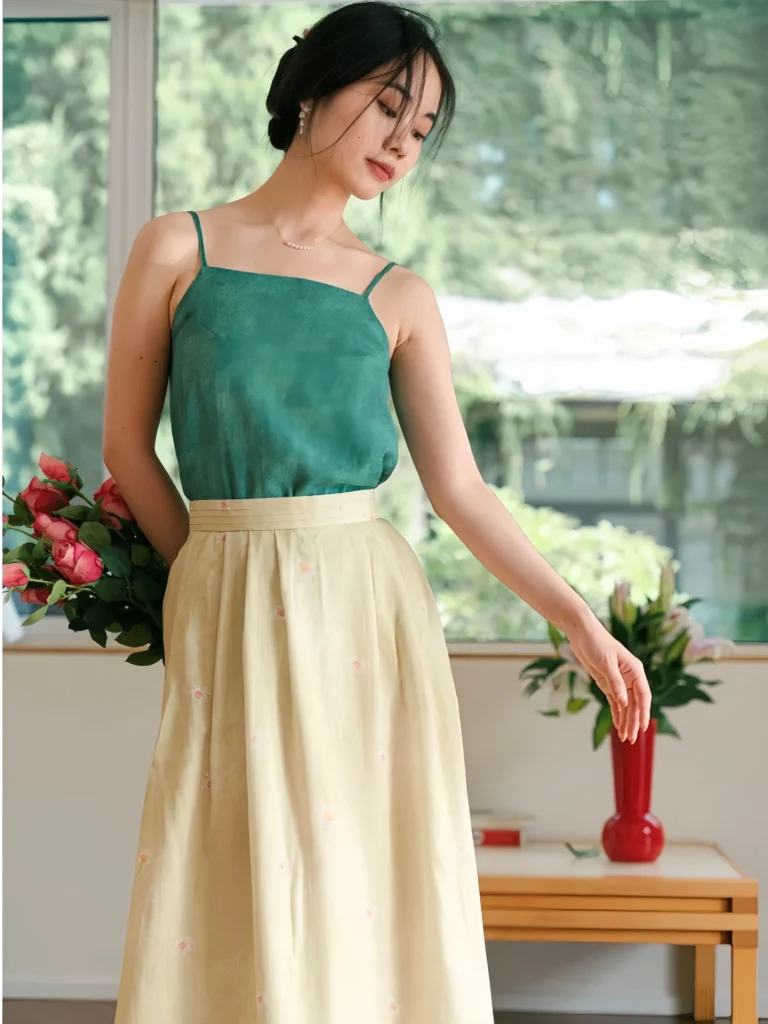

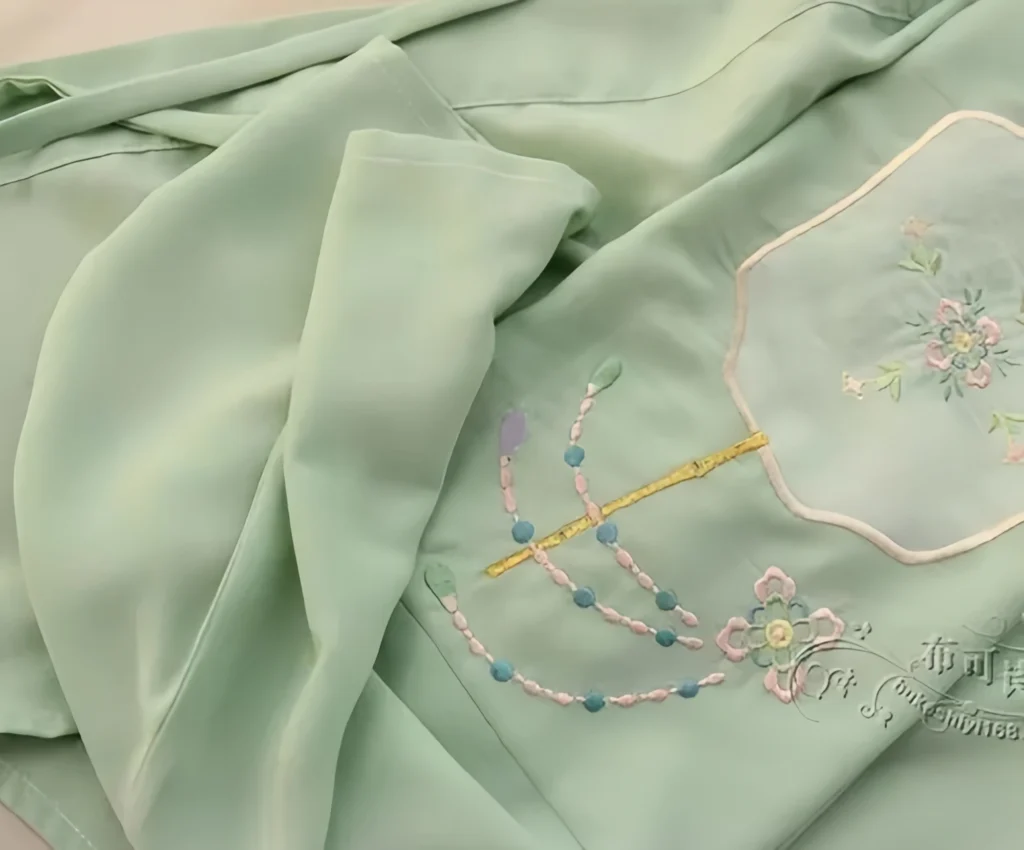
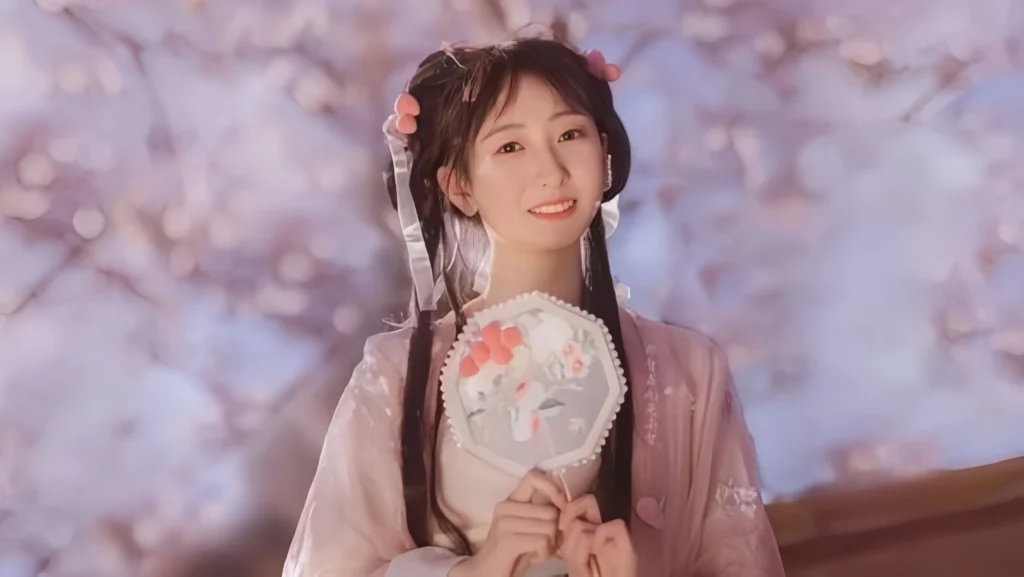
Responses